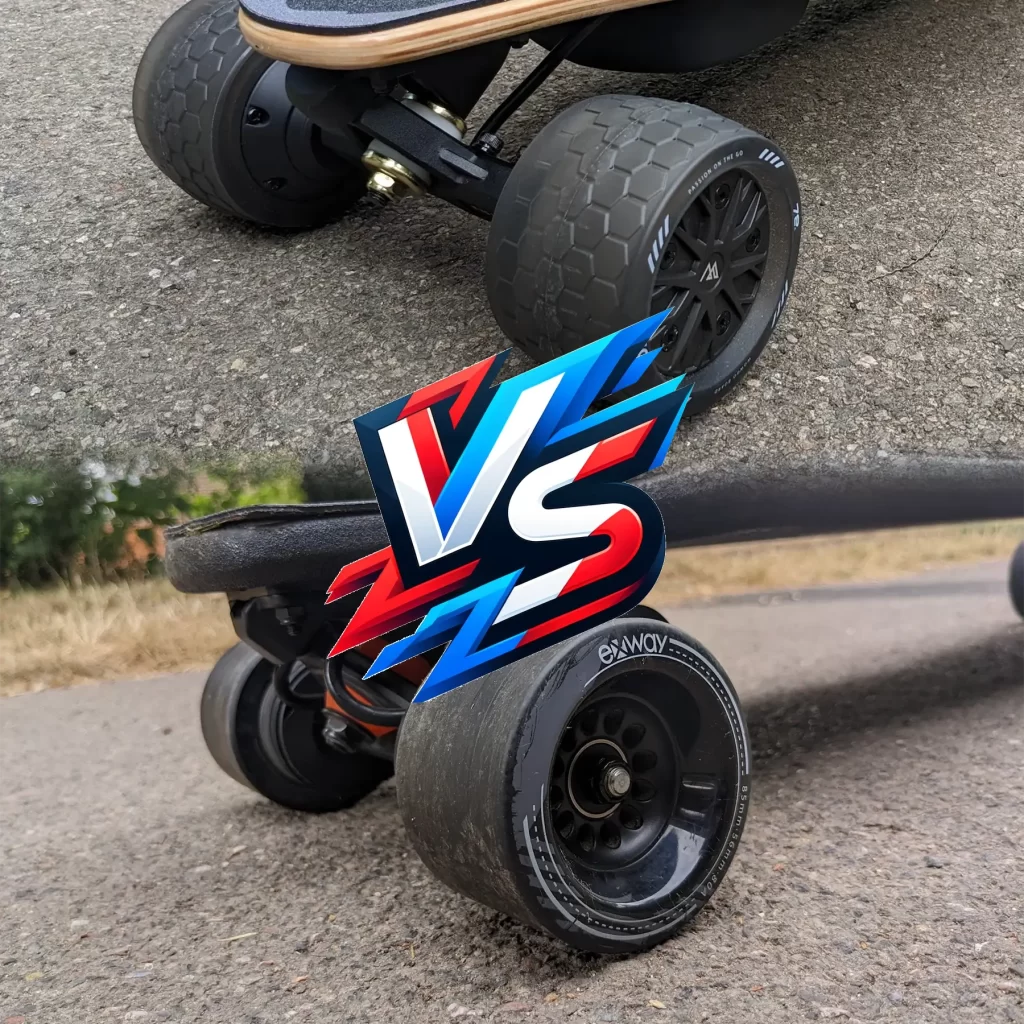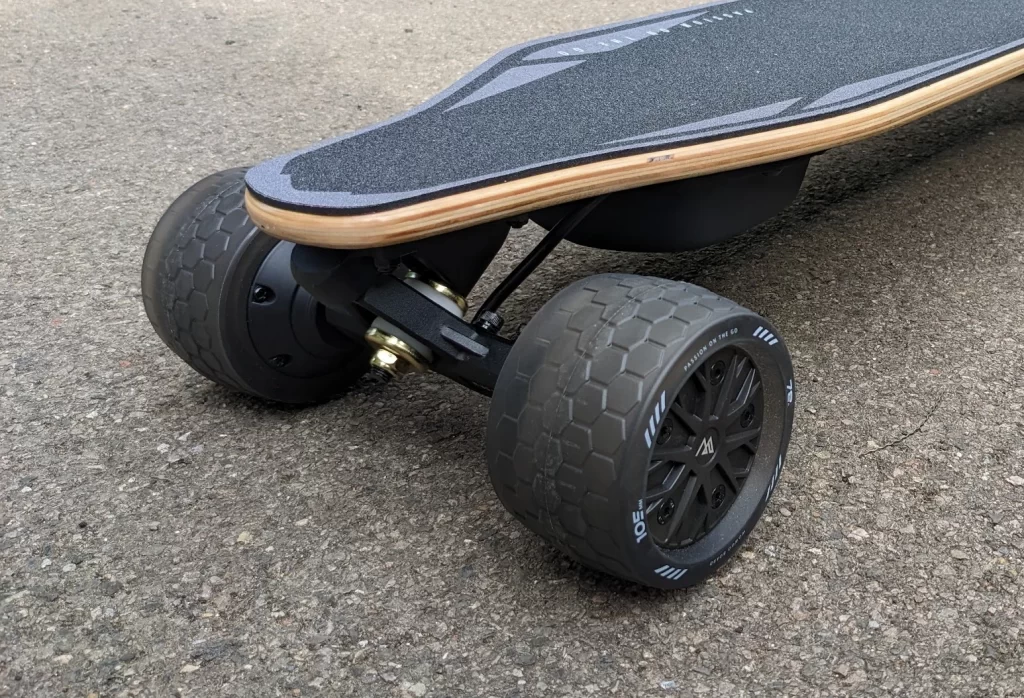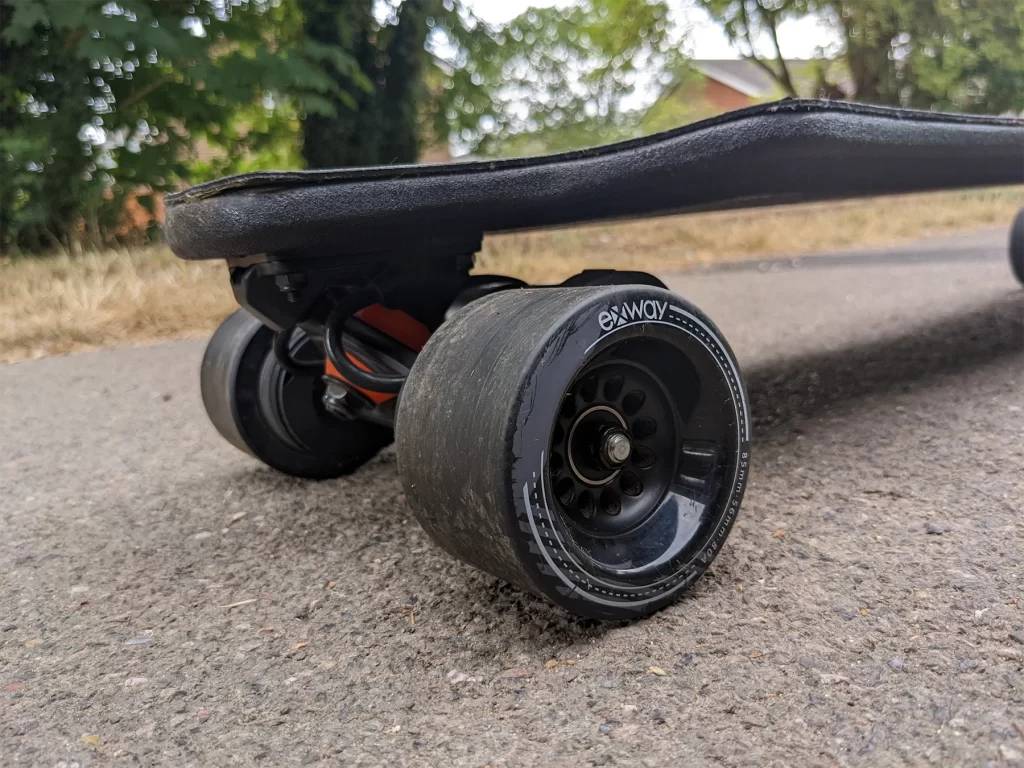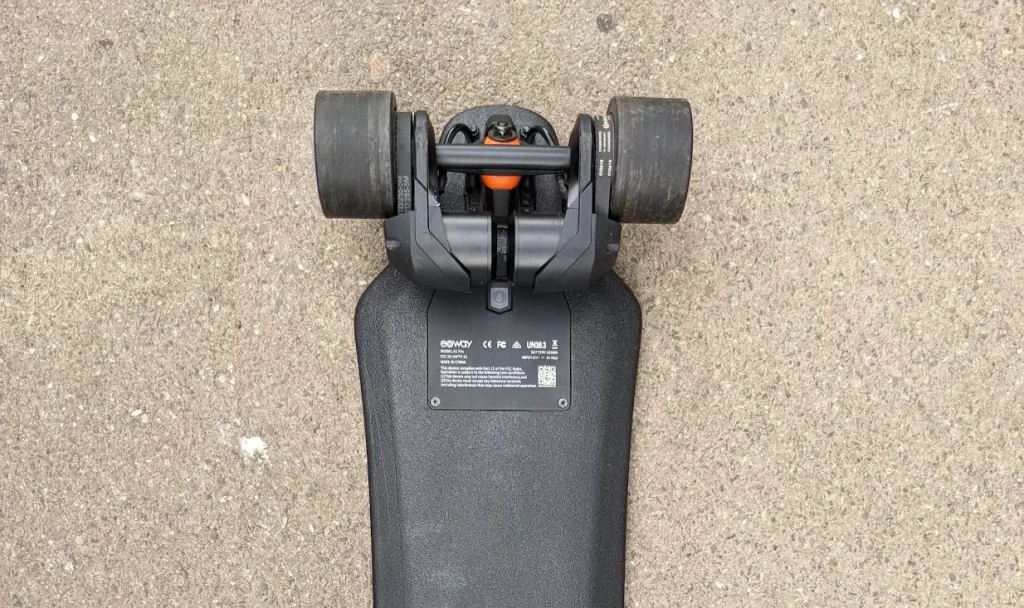Welcome to the thrilling world of electric skateboards, where innovation meets adrenaline! At the heart of this exhilarating experience lie two pivotal components – hub motors and belt-drive motors. These are not just parts of your board; they are the heartbeat that powers your ride. But which reigns supreme? That's the million-dollar question for enthusiasts and newcomers alike.

Hub motors, integrated seamlessly into the wheels, promise a sleek, streamlined ride, marrying simplicity with efficiency. In contrast, belt-drive motors, known for their robustness, offer a customizable experience, tailoring power and performance to your liking. This juxtaposition isn't merely about choosing a motor but defining your riding style, needs, and electric skateboarding journey.
So, buckle up as we dive into the depths of these two powerhouses, dissecting their mechanics, exploring their strengths and weaknesses, and ultimately helping you make an informed choice. Whether cruising city streets or tackling challenging terrains, understanding the heart of your electric skateboard is key to unlocking an unparalleled riding experience. Let's embark on this journey together!

Hub motors, a pivotal innovation in electric skateboarding, represent a blend of simplicity and efficiency. Embedded directly within the skateboard's rear wheels, these motors are designed to drive the wheels themselves. Unlike traditional external motors, hub motors eliminate the need for additional components like belts or chains, streamlining the skateboard's design.
This integration means that the motor and the wheel rotate simultaneously at a one-to-one ratio: each spin of the motor translates directly to a spin of the wheel. This direct connection results in a more compact, efficient propulsion system, enhancing the overall sleekness and agility of the skateboard. Hub motors not only redefine the aesthetics of electric skateboards but also contribute significantly to their performance and handling characteristics, making them a popular choice among both casual riders and enthusiasts.
One of the most significant advantages of hub motors is their low maintenance requirement. Encased within the wheel, these motors are less exposed to dirt and debris, reducing the need for frequent cleaning and upkeep. Occasional cleaning of the motor and its surroundings is sufficient, making it a hassle-free option for riders who prefer minimal maintenance.
Hub motors are known for their quiet operation. This near-silent performance is especially appealing for riders who value discretion, whether commuting through quiet neighborhoods or not wanting to disturb the peace. The absence of external gears or belts contributes to this reduced noise level, offering a serene riding experience.
Cost-effectiveness is another hallmark of hub motors. Generally more affordable than belt-drive systems, they offer a budget-friendly solution without compromising on quality. This affordability stems from their straightforward design and ease of installation, making them a popular choice among entry-level and budget-conscious riders.
In scenarios where the battery depletes, hub motors have an additional advantage: the ability to kick push. Thanks to their lower rolling resistance compared to belt-drive systems, skateboards equipped with hub motors can be easily pushed manually, providing riders with an added layer of convenience and reliability during their rides.
Hub motors often exhibit reduced power relative to belt-drive systems. This is primarily due to their 1:1 gear ratio, which can limit acceleration and hill-climbing performance. This aspect might be a significant consideration for those seeking a high-performance electric skateboard.
Heat dissipation is a challenge with hub motors. Encased within the wheel, they have limited air exposure, potentially leading to heat build-up. This issue can affect performance and the motor's lifespan, especially under extended or demanding conditions.
On some older models of hub motors, wheel replacement can be problematic. Unlike models where the sleeve can be removed, these older versions require changing the entire hub when the polyurethane wears out. This design constraint not only adds to the maintenance cost but also limits the flexibility to upgrade or customize the wheel setup. It could be a drawback for riders who prefer or require specific types of wheels for their riding style or terrain.

Belt-drive motors in electric skateboards represent a classic yet dynamic approach to motorized boarding. These motors are externally mounted and not integrated into the wheels. They function through a belt system that connects the motor to the wheel pulleys. This setup allows for a physical separation between the motor and the wheels.
The real magic of belt-drive motors lies in their gear mechanism. The motor spins a small gear (motor pulley), which, through a belt, turns a larger gear attached to the wheel (wheel pulley). This gearing system enables significant torque multiplication, providing a powerful thrust that is particularly noticeable in acceleration and hill climbing. The ability to swap out gears and belts offers a high degree of customizability, allowing riders to fine-tune their skateboard's performance to match their riding preferences and conditions.
One of the most significant advantages of belt-drive motors is their high degree of customizability. Riders have the flexibility to modify various components like pulleys, belts, and wheels to tailor the skateboard's performance to their specific needs. This adjustability allows for a personalized riding experience, whether one seeks more speed, power, or a particular handling characteristic.
Belt-drive systems facilitate easier wheel swapping compared to hub motors. The motor's separation from the wheels means riders can change out wheels for different sizes or types without affecting the motor, offering versatility for various terrains and preferences.
The gear system in belt-drive motors enables a significant increase in power, which is especially useful for acceleration and hill climbing. The ability to change gear ratios means these motors can generate more torque, making them ideal for riders who demand robust performance from their electric skateboards.
Belt-drive motors generally have better heat dissipation due to their external placement. This exposure to air helps keep the motor cool, reducing the risk of overheating and potentially extending the motor's lifespan. Better heat management is crucial for maintaining consistent performance, especially during extended use or in demanding riding conditions.
A notable downside of belt-drive motors is their noise level. The mechanical operation of belts and gears inherently generates more sound compared to the near-silent hub motors. This noise can be a drawback for riders who prefer a quiet ride or need to navigate through noise-sensitive areas.
Belt-drive systems require more maintenance than hub motors. The belts and gears are exposed to external elements, making them more susceptible to wear and tear. Regular checks and replacements of the belt are necessary, especially since a snapped or worn-out belt can significantly impact the board's functionality and may even leave the rider stranded. This maintenance aspect demands a greater commitment from the rider to ensure the skateboard's optimal performance and longevity.
The differences are quite pronounced when comparing acceleration capabilities between hub and belt-drive motors. Belt-driven boards are known for their superior acceleration due to the gearing system, which allows for more significant torque. This results in a faster, more responsive thrust when starting from a standstill, making belt-drive boards ideal for those who prioritize quick acceleration or need to navigate steep inclines.
On the other hand, while offering a smoother and more gradual acceleration, hub motors tend to lag behind in this aspect. They provide a steadier ride but might not satisfy riders looking for that immediate burst of speed. The direct drive system of hub motors translates into a more linear acceleration curve, which can be preferable for beginners or those who prioritize stability and ease of use over raw acceleration power.
The choice between the two systems largely depends on the rider's performance requirements and personal riding style preferences.
The braking efficiency of electric skateboards is a critical aspect of their performance, and it varies between hub and belt-drive systems. Hub motors generally offer smoother, more gradual braking. This can be advantageous for new riders or those who prefer a more controlled deceleration, as it reduces the risk of abrupt stops that could lead to loss of control.
In contrast, belt-drive systems typically feature stronger, more aggressive braking. This is due to the higher torque and gear mechanism, which can provide more immediate stopping power. While this can be beneficial in situations requiring quick stops, it may also require more skill to manage effectively, especially at higher speeds.
Each system's braking characteristics should align with your experience level and riding conditions for optimal safety and control.
When it comes to hill climb ability and torque, belt-drive motors often outperform their hub motor counterparts. The gearing system in belt-drive motors provides a higher torque output, crucial for climbing steep inclines. This increased torque allows for easier and more efficient hill climbing, making belt-drive systems particularly suitable for areas with varied terrain.
While efficient on flat surfaces, Hub motors can struggle with steep inclines due to their direct drive mechanism and lower torque. While recent advancements in hub motor technology have improved their performance, they typically still lag behind belt-drive systems in this aspect. Riders who frequently encounter hilly terrain may find belt-drive motors more capable and reliable for such conditions.
The choice between hub and belt-drive motors significantly impacts wheel use and riding comfort. Hub motors, with their integrated design, tend to use specialized wheels where the motor is part of the wheel assembly. This integration can limit the ability to swap wheels and may affect ride comfort due to the reduced thickness of the polyurethane layer around the motor.

On the other hand, Belt-drive systems allow for greater flexibility in wheel choice. Since the motor is separate from the wheels, riders can easily switch to different types and sizes of wheels to suit various terrains or personal preferences, potentially enhancing riding comfort. This adaptability makes belt-drive skateboards more versatile, especially for riders who value customizing their board's ride feel and handling.
An electric skateboard's sound or stealth factor varies significantly between hub and belt-drive motors. Hub motors are known for their quiet operation, making them ideal for riders who value stealth and discretion. This reduced noise level can be advantageous in urban settings or areas where minimizing disturbance is essential.
In contrast, belt-drive motors are typically louder due to the mechanical movement of the belts and gears. While not necessarily disruptive, this sound is more noticeable and can be a factor for those who prefer a quieter ride. For some riders, the sound of belt-drive motors adds to the experience, while for others, the quietness of hub motors is a distinct advantage.
When deciding between hub and belt motors for your electric skateboard, your choice should be guided by your specific needs and preferences:
Maintenance Tips:
Regardless of your choice, carrying basic tools and spare parts like belts or sleeves can be a lifesaver during your rides. Remember, the right motor type for you depends on how you plan to use your electric skateboard and how much time you're willing to dedicate to maintenance.
In summary, the choice between hub and belt-drive motors in electric skateboards hinges on balancing performance, maintenance, and personal preference. Hub motors offer ease of use, quiet operation, and low maintenance, making them ideal for casual riding and flat terrains.
Belt-drive motors excel in power and customization, suited for those seeking high performance, especially in hilly areas, albeit with higher maintenance needs. Ultimately, the decision should align with your individual riding style, environment, and willingness to maintain the board. Consider these factors carefully to choose the motor type that will best enhance your electric skateboarding experience.
